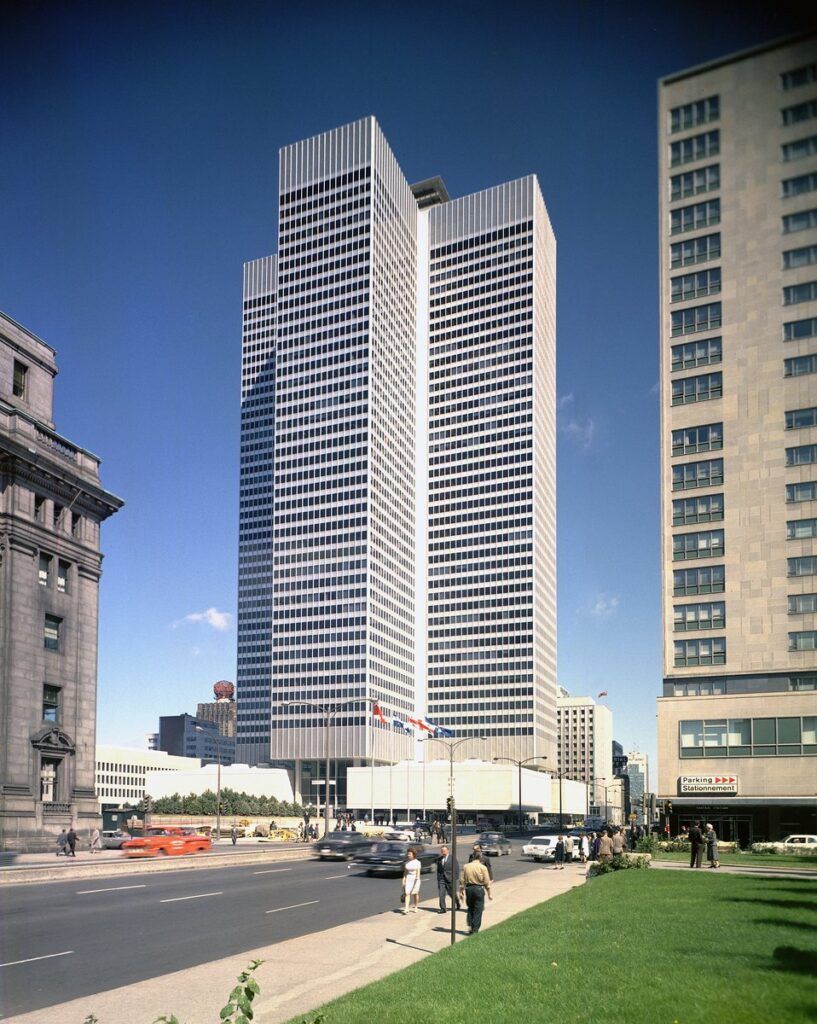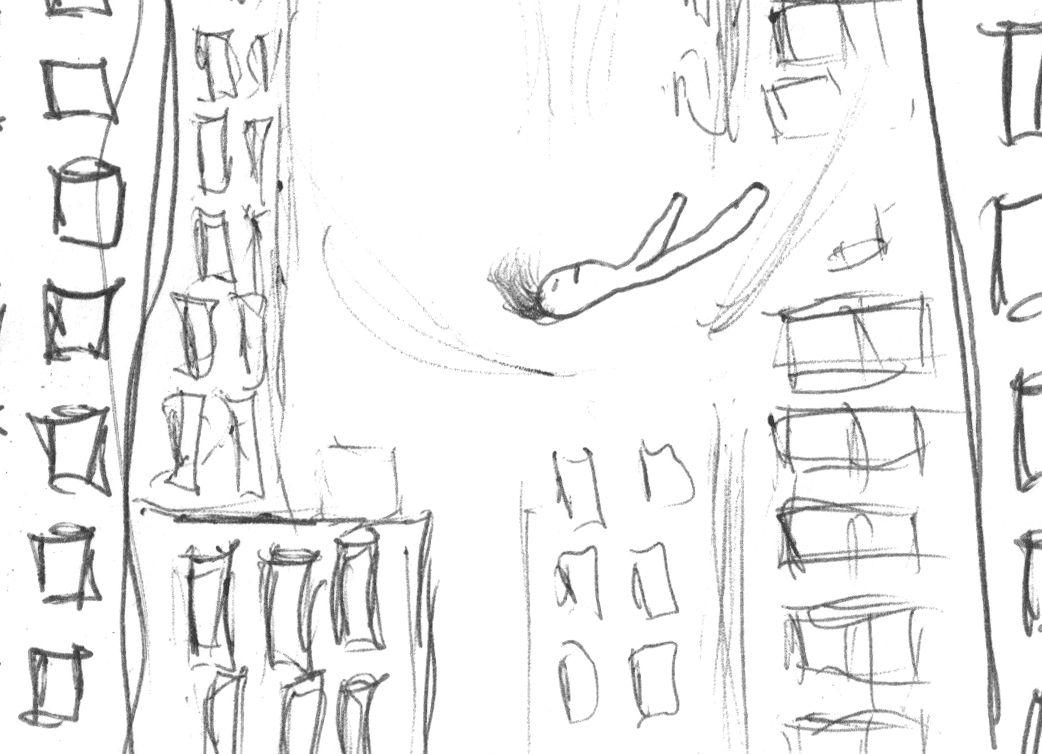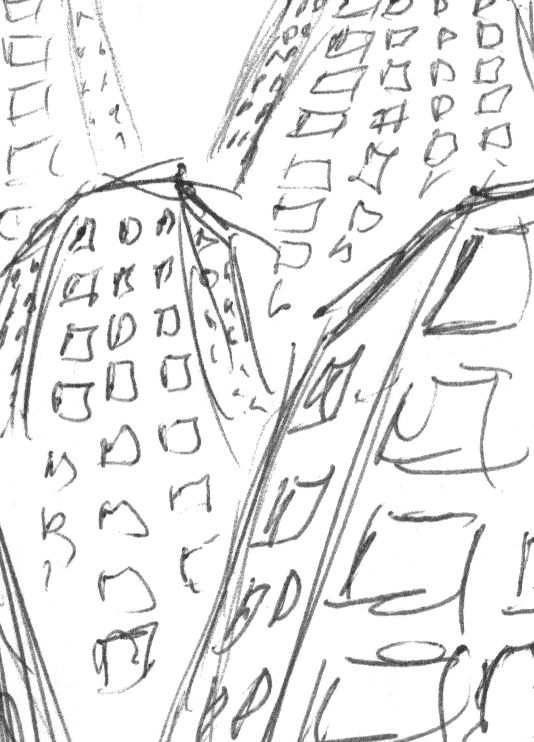- Whereas in the special Camera Obscura we dedicated to Alexandre Larose back in 2020 we were able to familiarise ourselves with his fascinating work processes, in 2022 we will finally be able to see the equally fascinating results of those processes on the screen. A part of the programme we are dedicating to him focuses on his Ville-Marie series, which Larose himself tells us about here.

I find the serial quality of your work very interesting in the Ville Marie films, the brouillards and the quotidienne gestures series. It is almost like a scientific approach to every theme, trying to explore and exploit all their possibilities, or like a painter’s studies. Could you tell us more about this way of working?
Indeed I definitely love to explore in a serial manner. I feel like it allows me to really dig into the expressive possibilities of a subject/concept. Even though 930 ended up as one single work I still see its making and assemblage as iterative manipulations around one theme. But the Ville Marie project started the kind of long term exploration which is now an integral part of my way of working. It’s interesting that you mention the scientific approach. I suppose that in my former training as an engineer I became familiar with this rigorous testing methodology. Because in my practice I systematically invite accidents to occur with the medium, this rigorous approach makes sure that I can understand and repeat the phenomena that these accidents reveal. Each subsequent iteration becomes informed by the previous one and that is how the project as a whole evolves. The other aspect of working in a serial manner over many years has to do with the technological evolution of the medium. In Ville Marie, for instance, although the core concept remains identical, the cameras and techniques I have been using to capture the falling point-of-view have changed. The resulting imagery then keeps producing a new experience.
With the scènes de ménage series (what I’m currently working on), the serial aspect occurs first within the individual chapters, such as the various études in Saint Bathans Repetitions for instance. But in the last couple of years I have been working on three additional chapters, principally based on the figure of my father. Once I lock down a shooting location and invest it, I begin to stage his presence within and start elaborating in-camera studies. Although each location brings new ways of staging his figure, every subsequent chapter brings the knowledge and experience gained from the previous ones, hopefully adding something new to the language.


Could you tell us more about the Ville Marie series? What is that building, and how did the project evolve? I guess it all started with the super 8 images of the camera falling down. Did you think from the outset about all these generative evolutions in the work?
The title of the project refers to “place Ville Marie”, the first skyscraper to be built in Montréal, around 1962. I was fascinated and obsessed by that building when I first moved to Montréal, back in 2003. I think it had to do with both the unique architecture (the cruciform shape, shiny aluminum frame and black windows) and being for the first time exposed to an urban setting I wasn’t familiar with. During these years I was also recurrently dreaming of falling from the top of high-rise buildings, my body upside-down and my head facing the sky (see the drawings). Initially these dreams were nightmares as I couldn’t quite figure a way out of them. I would constantly anticipate an impact with the ground throughout the fall: either I woke up terrified or eventually the trajectory of the fall dissolved into some kind of blackness. I think these two events somehow connected –the obsession with the building and the recurrent dream– and I eventually wanted to see how the falling point-of-view looked like through the lens of cinema.
The series started in 2005, with experiments in pixilation, where I simulated descending and ascending motions along building surfaces using in-camera cinematography. La Grande Dame (étude) consists in one of these studies. “La Grande Dame (de Montréal)” was how “place Ville Marie” was nicknamed by the residents and business sector in its early years… At about the same time I initiated the research with the falling cameras, with the help of Ludovic Boily as the engineer of the project. Ludovic came up with the design of a contraption, capable of maintaining the camera’s upwards point-of-view throughout the free fall. At the time digital cinematography wasn’t robust enough to sustain the impact, which is one reason I had to keep working in super 8. Apart from its relatively small scale, the fact that the film was protected by a light proof cartridge meant that as a worse case scenario I could still recover the images if the camera was destroyed.
For about a year I scouted apartment buildings in Québec City and Montréal, trying to access roofs from where to capture these drops. By the end of 2006 I had accumulated sequences ranging from five to thirty-storey buildings. Ville Marie – A was conceived from the optical treatment of that early material. There are no drops from “place Ville Marie” in this film. In 2008 I had failed to convince the administration of the skyscraper to let me continue the project there. And so entitling that film as such (Ville Marie – A) was a way for me to keep the focus of the longer term objective. Ville Marie – A acts as a kind of cross-section of where the creative process was at this point in the timeline.
Eventually I started to work with Idriss Ammara, an aerodynamic engineer based in Montréal, to improve the contraption and possibly demonstrate the feasibility of the project to the “place Ville Marie” administration. In 2011 we finally had a shooting opportunity. Ville Marie – B starts there and ends when I completed the mosaïque sequences, in 2014. During that shoot I captured two super 8 drops and started to experiment with digital capture as well, although the medium was still not robust enough. Towards the end of Ville Marie – A I had started to elaborate multi-layered optical printing sequences involving the reduction and multiplication of identical drop sequences within the same frame. At the time I felt like I hadn’t exploited the entire potential of these formal constructions. When I was trying to extract the color super 8 cartridge from the “place Ville Marie” shoot I noticed a breach in the light proof plastic. At first I thought the footage had been compromised but the light leak only affected the unexposed half of the film reel. The result was this color oscillation between purple, yellow and red over about two minutes following the end of the free fall. My main motivation behind the making of the mosaïque sequences of Ville Marie – B was to see how this oscillation would translate visually. The deterioration of the loop I was using in the optical printer eventually added artefacts (such as uneven registration, tape splices, etc) to the overall composition, which made it even more interesting. I was really looking for something unpredictable to occur, but to have that unpredictability somehow organized and duplicated.
I recently completed the final leg of the Ville Marie project, entitled La Grande Dame, with the elaboration of a four-screen digital projection (I also attached pictures of how that looks). I got permission to shoot again in the Fall of 2014 and ultimately in the summer of 2015, where I used an array of five digital cameras to capture a semi-spherical field of view facing upwards (no super 8). Here the post-production exploration had to do more with expanding the cinematic experience, taking it out of the film theater and into the installation/sculptural form. Custom-built projection surfaces are suspended in a room large enough to simulate the scale of the captured perspective. I applied no treatment to the images; the sequences are left as raw as possible.
To go back to your last question, initially I did not think of the generative evolutions of the work. I knew that I was gonna have to do multiple tests but I didn’t think that I’d be making works out of them. I feel like part of the motivation to generate iterations had to do with the long waiting times in-between the raw captures. The project became a constant work-in-progress and somehow I felt like I had to report on what I was up to, along the way.





